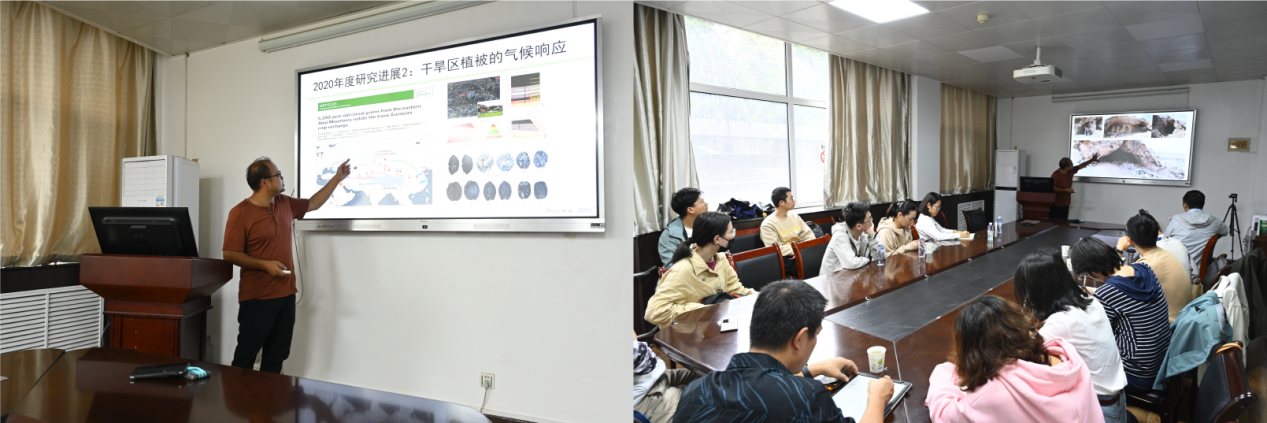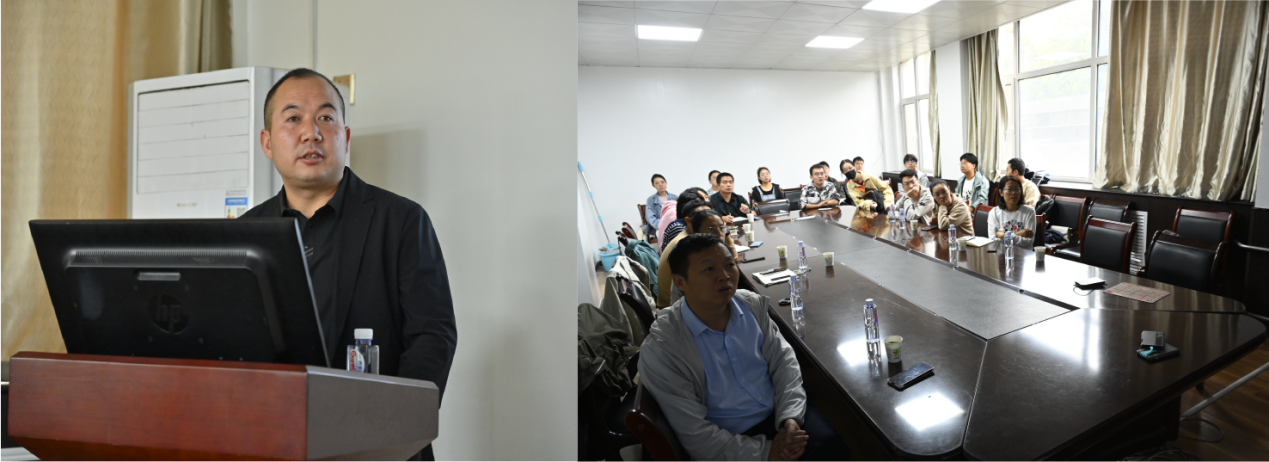On September 13, 2024, by invitation from Professor Dong Guanghui of the School of Earth and Environmental Sciences and the Key Laboratory of Western China's Environmental Systems, Ministry of Education at Lanzhou University, Researcher Zhou Xinying from the Institute of Vertebrate Paleontology and Paleoanthropology, Chinese Academy of Sciences, and Associate Researcher Yang Jian from the Ningxia Hui Autonomous Region Institute of Cultural Relics and Archaeology visited our university for an academic exchange. Researcher Zhou Xinying delivered a lecture titled "Rethinking the Origins of Agricultural Systems in West Asia," and Associate Researcher Yang Jian presented "Recent Advances in Neolithic Archaeology in the Ningxia Region." The lectures were hosted by Professor Dong Guanghui, with more than 20 faculty and students from the School of Earth and Environmental Sciences and other institutions in attendance.
Researcher Zhou Xinying discussed the progress in research on transcontinental agricultural system exchanges. He highlighted that in the Fertile Crescent of West Asia, wheat was domesticated about 10,000 years ago and introduced to China around 5,200 years ago via the Eurasian Steppe. The evolution of primitive wheat to the forms consumed today involved three stages: diploid, tetraploid, and hexaploid. The tetraploid wheat, resulting from a cross between wild goat grass and einkorn wheat, and later a cross with wild emmer, led to the hexaploid bread wheat. Based on extensive archaeological investigations and studies in Central and West Asia, Zhou proposed that early domesticated wheat might have existed outside the Fertile Crescent. Compared to the better-watered river valleys, their archaeological surveys also included foothill zones, revealing significant new findings and insights by his team in recent years that have substantial academic value for advancing the study of agricultural origins. After the presentation, several faculty and students engaged in a lively discussion with Researcher Zhou on hotspots in agricultural origin research and multidisciplinary methods and applications in the field.

Researcher Zhou Xinying Delivers an Academic Lecture
Associate Researcher Yang Jian reviewed the developmental history of Neolithic archaeology in Ningxia during his lecture. The Ningxia Hui Autonomous Region Institute of Cultural Relics and Archaeology conducted foundational digs at the Caiyuan and Yehezi sites in the 1980s and 1990s. Over the past decade, Yang's team has excavated multiple significant sites in Ningxia, including Longde Shatang Beiyuan and Zhoujiazui Tou, achieving rich archaeological results. They also carried out systematic archaeological surveys in the Luoshan area and the western foothills of the Liupan Mountains, providing valuable data for Neolithic archaeology in the region. Supported by the National Bureau of Cultural Heritage, this year's Qingshui River Basin archaeological survey, led by Yang, tightly integrates archaeological discoveries in southern and central Ningxia, significantly deepening the understanding of the region's Neolithic period. Although recently initiated, the project has already yielded rich archaeological findings. Yang's analysis of the archaeological work in central and southern Ningxia established a sequence of Neolithic cultural development: Yangshao Culture - Majiayao Culture - Caiyuan Culture - Shatang Beiyuan Type - Qijia Culture. He looks forward to close cooperation with the environmental archaeology team at Lanzhou University to further advance the archaeological research in Ningxia.

Associate Researcher Yang Jian Delivers an Academic Lecture
The presentations by Researchers Zhou Xinying and Yang Jian were detailed and informative, showcasing the latest advances in the study of agricultural origins in West Asia and recent progress in Neolithic archaeology in the Ningxia region. The session concluded with an enthusiastic Q&A, enriching all participants.